The following is chapter 7 from my Common Table Expressions book in its entirety.
I can remember the first time that I worked on data paging code. I had to page through web site search results 20 at a time on a given web page. My task was to understand how it had been written and to do some bug fixing. After reviewing about 2,000 lines of code, and reviewing the seven different variables that were being used to know the current page, the next page, the previous page, the page size, the row at the top of the page, the row at the bottom of the page, and the number of pages, I finally understood what the code was intended to do. What a mess that was, but beyond the mess, the performance was horrible. The way the page worked was that based on the page you were on, all of the rows would be queried, then a loop would read through all of the rows before the current page, then loop through the rows on the current page displaying them on the page, and finally it would ignore the results after the current page. So page 1 was slow, page 2 was slower than page 1, page 3 was slower than page 2 and on and on.
Since that point I have implemented several different data paging algorithms myself, all better than the original implementation but none as elegant as the CTE way of doing data paging. I used to look at data paging as a painful task, but thanks to the SQL Server implementation of CTEs there is no more pain.
READER NOTE: Please run the CTEBookSetup.sql script in order to follow along with the examples in this chapter. The script mentioned in this chapter is available at http://SteveStedman.com.
Data Paging
The need for data paging comes up when working with a result set that is too large to display in the space available or in the time available. A familiar example may be an internet search engine. When a search is run on a search engine generally the first 20 results out of many more are displayed. For instance, when searching for “Steve Stedman” it displays the first 20 out of 1,120,000 results. When searching for “John” (with no last name) the search site still only displays the first 20 results, but it is out of 2.7 billion results.
Without the concept of data paging, these searches would have been limited to a fixed number of results, or the alternative of displaying all of the results. Imagine if that search engine tried to display 2.7 billion results. It may take a while for the page to load.
When using a search engine, the first 20 results are usually displayed, but if the result you want isn’t in the top 20 results, there is the ability to click through to the second or third page (or beyond). This concept of grabbing a fixed number of results and then jumping to page 2 or beyond is known as data paging.
For the example of building a data paging CTE, we will start with a query that returns more results than can be displayed on a single page as shown in the following example:
SELECT CustomerID,
CustomerType,
FirstName,
LastName,
CompanyName
FROM Customer
ORDER BY CustomerID ASC;
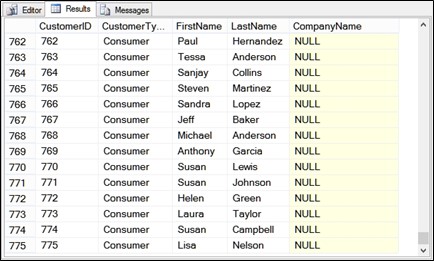
Figure 7.1 Query with 775 rows of output.
In Figure 7.1 it may be feasible to display 775 results on a single page or it may just be a little too overwhelming. In order to make it more manageable we can use a CTE with data paging.
Data Paging CTE
The steps to create a data paging CTE are:
- Create the original query that needs paging.
- Using the ROW_NUMBER function with the OVER clause, add a new column into the original query to display a row number. If the original query had an ORDER BY clause specified, move the ORDER BY into the OVER clause.
- Wrap the query from Step 2 with a CTE, and select everything from that CTE.
- Add a WHERE clause to the outer query to filter the rows for the first page.
- Remove the fixed values and replace them with variables to hold the page number and page size.
The reason that a CTE is needed to accomplish this is that the ROW_NUMBER function and OVER clause (known as the windowing functions) can’t be used in a WHERE clause, but when they are returned from a CTE they can be used in the outer WHERE clause.
Step 1 – Create the original query that needs paging. We can just use the one from the previous example:
SELECT CustomerID,
CustomerType,
FirstName,
LastName,
CompanyName
FROM Customer
ORDER BY CustomerID;
Step 2 – Using the ROW_NUMBER function with the OVER clause, add a new column into the original query to display a row number. If the original query had an ORDER BY clause specified, move the ORDER BY into the OVER clause.
The OVER clause used this way is what is known as a windowing function in SQL Server.
SELECT CustomerID,
CustomerType,
FirstName,
LastName,
CompanyName,
ROW_NUMBER() OVER (ORDER BY CustomerID) AS RowNum
FROM Customer;

Figure 7.2 Output from original query with RowNum calculated from the windowing function.
The common mistake at this point is to try and put the ROW_NUMBER with the windowing function into the WHERE clause, which isn’t allowed as shown in the following code:
— Don’t do it this way, an error will be thrown
SELECT CustomerID,
CustomerType,
FirstName,
LastName,
CompanyName,
ROW_NUMBER() OVER (ORDER BY CustomerID) AS RowNum
FROM Customer
WHERE ROW_NUMBER() OVER (ORDER BY CustomerID)
BETWEEN 10 and 20;

Figure 7.3 Error caused by attempting to use the OVER windowing function in the WHERE clause.
Instead of attempting to do the filtering, first the query needs to be wrapped in a CTE, which brings us to Step 3.
Step 3 – Wrap the query from Step 2 with a CTE, and select everything from that CTE.
;WITH CustomerPagingCTE AS
(
SELECT CustomerID,
CustomerType,
FirstName,
LastName,
CompanyName,
ROW_NUMBER() OVER (ORDER BY CustomerID) AS RowNum
FROM Customer
)
SELECT *
FROM CustomerPagingCTE;
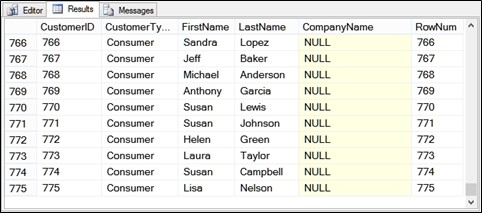
Figure 7.4 Output from the CTE version of the query.
Step 4 – Add a WHERE clause to the outer query to filter the rows for the first page.
In the following example, WHERE RowNum BETWEEN 0 and 10;has been added to filter the first page with a page size of 10.
;WITH CustomerPagingCTE AS
(
SELECT CustomerID,
CustomerType,
FirstName,
LastName,
CompanyName,
ROW_NUMBER() OVER (ORDER BY CustomerID) AS RowNum
FROM Customer
)
SELECT *
FROM CustomerPagingCTE
WHERE RowNum BETWEEN 0 AND 10;
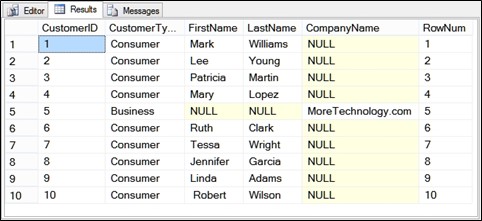
Figure 7.5 Filter added to the query.
We can test the data paging at this point by adjusting the numbers in the WHERE clause and confirming that we get the correct results.
Step 5 – Remove the fixed values and replace them with variables to hold the page number and page size.
For this step we will be declaring 2 variables, @pageNum and @pageSize which will be used in the WHERE clause to calculate the row numbers that are to be shown on the current page. BETWEEN is used in the WHERE clause to calculate the row number of the first row on this page and to calculate the row number of the last row on this page.
DECLARE @pageNum AS INT;
DECLARE @pageSize AS INT;
SET @pageNum = 2;
SET @pageSize = 10;
;WITH CustomerPagingCTE AS
(
SELECT CustomerID,
CustomerType,
FirstName,
LastName,
CompanyName,
ROW_NUMBER() OVER (ORDER BY CustomerID) AS RowNum
FROM Customer
)
SELECT *
FROM CustomerPagingCTE
WHERE RowNum BETWEEN (@pageNum – 1) * @pageSize + 1
AND @pageNum * @pageSize;
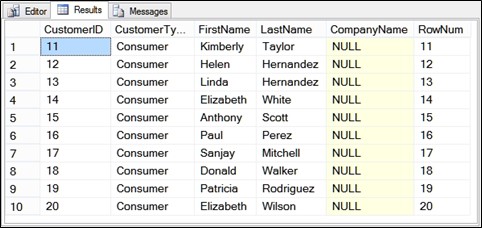
Figure 7.6 Output from data paging page 2.
At this point all we need to do to get to page 3 is change the @pageNum variable from the previous code example.
SET @pageNum = 3;
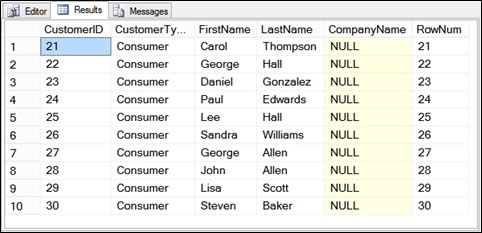
Figure 7.7 Output from data paging page 3.
With these five easy steps a query which produces a large result set can be quickly converted into a data paging query. These steps will simplify most any other method of implementing data paging.
Offset and Fetch in SQL Server 2012
SQL Server has evolved over time and each new version adds new features designed to make queries easier and more powerful. SQL Server 2012 introduced the OFFSET and FETCH keywords which allow for data paging which is a bit easier than the CTE way of doing it, but is only available in SQL Server 2012 and later.
Offset and Fetch
One thing to consider with OFFSET and FETCH is that the query must have an ORDER BY clause. Hard coded or dynamic values can be used to specify rows to be returned. On the ROWS keyword the ‘S’ is optional and it can be entered as ROW or ROWS.
Let’s use the query from the beginning of the chapter and add a line to the end of the query specifying the OFFSET and number of rows to FETCH. The following example will return page 1 with a page size of 10.
SELECT CustomerID,
CustomerType,
FirstName,
LastName,
CompanyName
FROM Customer
ORDER BY CustomerID
OFFSET 0 ROWS FETCH NEXT 10 ROWS ONLY;
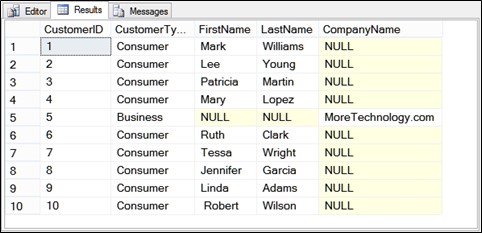
Figure 7.8 Output from data paging using OFFSET and FETCH.
Next we take the OFFSET and FETCH version of our query and modify it to work similarly to the CTE version which allowed us to specify a page number and a page size.
DECLARE @pageNum AS INT;
DECLARE @pageSize AS INT;
SET @pageNum = 3;
SET @pageSize = 10;
SELECT CustomerID,
CustomerType,
FirstName,
LastName,
CompanyName
FROM Customer
ORDER BY CustomerID
OFFSET (@pageNum – 1) * @pageSize ROWS
FETCH NEXT @pageSize ROWS ONLY;
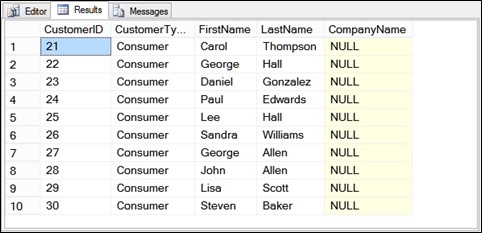
Figure 7.9 Page 3 of paging using OFFSET and FETCH.
In the previous examples we see that the OFFSET and FETCH method of doing data paging may be easier to use than the CTE method. One day this may completely replace the need to use the CTE data paging.
Summary
CTEs give a way do to data paging on queries with large result sets that would otherwise not usually be feasible in T-SQL.
With 5 steps it is possible to quickly and easily add data paging into an existing query.
- Create the original query that needs paging.
- Using the ROW_NUMBER function with the OVER clause, add a new column into the original query to display a row number. If the original query had an ORDER BY clause specified, move the ORDER BY into the OVER clause.
- Wrap the query from Step 2 with a CTE, and select everything from that CTE.
- Add a WHERE clause to the outer query to filter the rows for the first page.
- Remove the fixed values and replace them with variables to hold the page number and page size.
The use of the windowing functions with the ROW_NUMBER function and the OVER clause allow the assignment of a row identifier that can be used to filter out only the rows for a given page.
SQL Server 2012 introduced OFFSET and FETCH to replace the need to use CTEs for data paging. The OFFSET and FETCH method may be a bit easier and cleaner to write in T-SQL, but it is only available in SQL Server 2012 and newer.
Either the CTE data paging, or the OFFSET and FETCH method of data paging are cleaner and more efficient than trying to do data paging in application level code.
More from Stedman Solutions:

Steve and the team at Stedman Solutions are here for all your SQL Server needs.
Contact us today for your free 30 minute consultation..
We are ready to help!